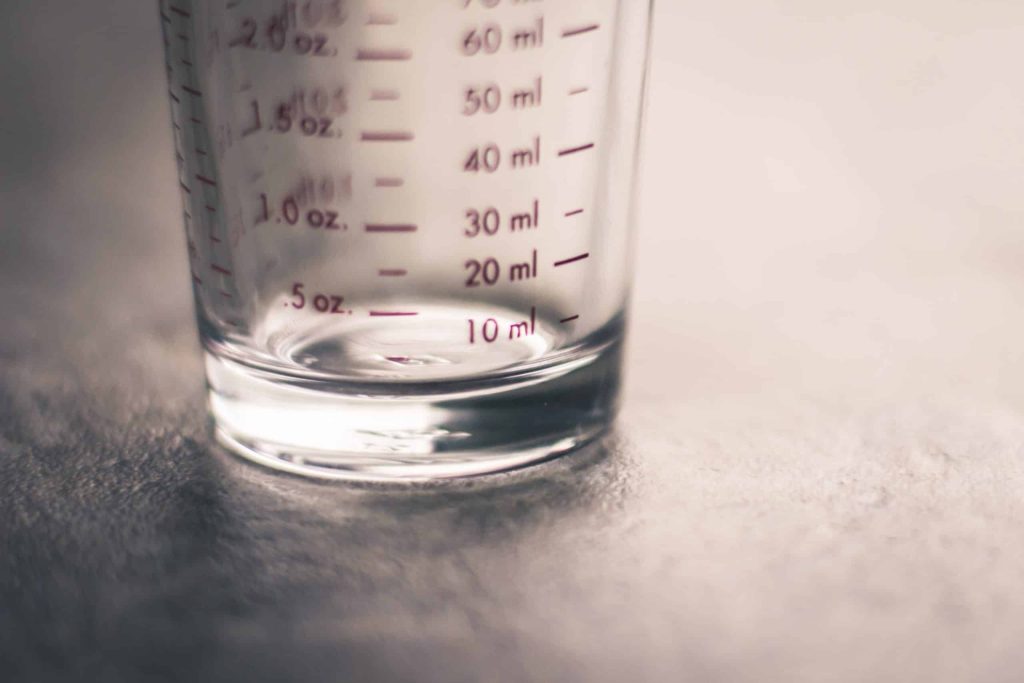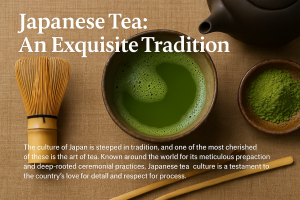Delving into the world of culinary arts often leads to the perplexing realm of measurements. Aspiring chefs and seasoned cooks alike often find themselves pondering the conversion between ounces and cups. Whether it’s for a delicate dessert or a savory stew, understanding this fundamental aspect is pivotal for achieving gastronomic perfection.
In this article, we embark on an enlightening journey to demystify the enigma of culinary measurements, specifically focusing on the conversion from ounces to cups. Unraveling this mystery will empower you to navigate recipes with confidence, ensuring impeccable culinary creations every time.
Join us in uncovering the correlation between ounces and cups, empowering you to approach your kitchen endeavors with prowess and precision. Whether you’re a novice cook or a culinary connoisseur, mastering these nuances will elevate your epicurean adventures to new heights.
Importance of accurate culinary measurements
Accurate measurements form the bedrock of successful cooking and baking. Whether you’re following a treasured family recipe or endeavoring to create a new culinary masterpiece, precision in measurements is non-negotiable. The delicate balance of ingredients hinges on accurate measurements, influencing the texture, flavor, and overall outcome of your dish. An understanding of culinary measurements not only ensures consistent results but also allows for creative experimentation with confidence.
Culinary measurements serve as a universal language in the world of cooking, enabling chefs and home cooks to share and replicate recipes with precision. Imagine a world without standardized measurements – chaos would reign in the kitchen, and the art of cooking would be fraught with uncertainty. Embracing the significance of accurate measurements is the first step towards culinary mastery, laying the groundwork for culinary excellence with every dish.
The quest for perfection in the culinary realm is underpinned by meticulous attention to detail, and accurate measurements are at the core of this pursuit. Whether you’re striving for a flawless soufflé or a delectable sauce, the harmony of ingredients hinges on precise measurements to orchestrate a symphony of flavors and textures.
Basic culinary measurements and conversions
Before delving into the specific conversion between ounces and cups, it’s essential to grasp the basic culinary measurements and their conversions. The culinary world employs a diverse range of measurements, including teaspoons, tablespoons, ounces, cups, pints, quarts, and gallons, each serving a unique purpose in recipes. Understanding the interplay between these measurements is fundamental for executing recipes with finesse.
Conversions between different units of measurement are part and parcel of culinary prowess, allowing for seamless navigation of diverse recipes. For instance, knowing that 1 cup equals 16 tablespoons or 8 fluid ounces lays the groundwork for fluid culinary creativity. Equipping oneself with a comprehensive understanding of these basic measurements paves the way for culinary confidence and competence in the kitchen.
Mastering culinary measurements and their conversions is akin to unlocking the code to a treasure trove of culinary delights. It bestows the freedom to explore a myriad of recipes, confidently adjusting quantities and proportions to suit individual preferences and dietary requirements. Embracing the versatility of culinary measurements fosters a spirit of creativity and innovation, culminating in culinary creations that delight the palate and nourish the soul.
Understanding fluid ounces and dry ounces
In the realm of culinary measurements, it’s crucial to distinguish between fluid ounces and dry ounces. Fluid ounces are used to measure volume, particularly in the context of liquids such as water, milk, or oil. On the other hand, dry ounces, also known as weight ounces, are utilized to measure the weight of dry ingredients like flour, sugar, or grains. Understanding this dichotomy is essential for accurate measurement and successful recipe execution.
The distinction between fluid ounces and dry ounces is pivotal in ensuring the precise balance of ingredients in recipes. A miscalculation in this regard can significantly impact the texture and flavor of the final dish, potentially leading to culinary disappointment. By discerning the appropriate application of fluid ounces and dry ounces, you harness the power to elevate your culinary creations to new heights of excellence.
Navigating the nuances of fluid ounces and dry ounces empowers you to approach recipes with clarity and confidence, making informed decisions about the type of measurement required for each ingredient. This nuanced understanding serves as a compass, guiding you through the intricate terrain of culinary measurements with adeptness and finesse, ultimately culminating in culinary triumphs that leave a lasting impression.
How many ounces are in 1 cup?
The conversion from ounces to cups is a fundamental aspect of culinary measurements that frequently perplexes even the most seasoned cooks. Understanding this conversion is pivotal for executing recipes with precision, ensuring that the intended balance of ingredients is achieved. So, how many ounces are in 1 cup? The answer is contingent on whether the measurement pertains to fluid ounces or dry ounces.
In the context of fluid ounces, 1 cup is equivalent to 8 fluid ounces. This standard conversion is pivotal for accurately measuring liquids such as water, milk, broth, or oil in recipes. Armed with this knowledge, you can confidently navigate recipes that call for fluid ounces, ensuring that the liquid components harmonize seamlessly with other ingredients to yield delectable culinary creations.
Conversely, in the realm of dry ounces, 1 cup varies in weight depending on the specific ingredient. For instance, 1 cup of all-purpose flour amounts to approximately 4.25 ounces, while 1 cup of granulated sugar weighs around 7.05 ounces. It’s essential to consult reliable sources or utilize a kitchen scale for precise measurements of dry ingredients, as variations can significantly impact the outcome of your culinary endeavors.
Grasping the correlation between ounces and cups is a transformative milestone in the culinary journey, equipping you with the proficiency to execute recipes with finesse and accuracy. This understanding cultivates a sense of mastery, allowing you to approach diverse recipes with the assurance that your measurements align with the intended culinary alchemy.
Culinary measurements for different ingredients
The diverse nature of ingredients in culinary pursuits necessitates a nuanced approach to measurements. From the delicate precision required for spices to the robust measurements of staples like flour and sugar, each ingredient demands a tailored approach to ensure culinary success. Understanding the specific measurements for different ingredients is integral to the art of cooking and baking.
Ingredients such as salt, spices, and leavening agents typically require minute measurements, often in the realm of teaspoons and fractions of a teaspoon. These seemingly diminutive quantities wield significant influence over the flavor profile of a dish, underscoring the importance of precise measurements in culinary endeavors. Conversely, staple ingredients like flour, sugar, and liquids call for more substantial measurements, often in cups or fluid ounces.
Navigating the diverse landscape of culinary measurements for different ingredients is akin to wielding a painter’s palette, deftly selecting and harmonizing a spectrum of flavors and textures to compose a culinary masterpiece. The ability to discern the appropriate measurements for each ingredient empowers you to orchestrate a symphony of tastes, elevating your culinary creations to the realm of epicurean delight.
Common misconceptions about culinary measurements
In the realm of culinary measurements, misconceptions abound, potentially leading to culinary misadventures and disappointments. One prevalent misconception revolves around the interchangeability of dry and liquid measurements, often resulting in inaccurate recipe execution. It’s imperative to discern the distinct applications of fluid ounces and dry ounces, as their interchangeability can compromise the integrity of recipes.
Another common misconception pertains to the precision of measurements, with some individuals adopting a lax approach that compromises the delicately balanced harmony of ingredients. Whether it’s a matter of heaping versus leveled teaspoons or approximate cup measurements, embracing precision in culinary measurements is non-negotiable for achieving consistent and exceptional results.
Furthermore, misconceptions regarding the equivalency of measurements across different recipes can lead to confusion and culinary mishaps. Not all recipes adhere to the same standard measurements, and it’s crucial to adapt to the specific requirements of each recipe for optimal outcomes. By dispelling these misconceptions and embracing a nuanced understanding of culinary measurements, you pave the path for culinary triumphs that resonate with culinary finesse.
Tips for accurate culinary measurements
Mastering the art of accurate culinary measurements is a skill that can be honed with practice and attention to detail. Embracing a few simple tips can elevate your culinary endeavors to new heights of precision and excellence. Firstly, invest in reliable measuring tools, including graduated cups, measuring spoons, and a kitchen scale, to ensure consistent and accurate measurements across diverse recipes.
Secondly, adopt a meticulous approach to measurement, employing techniques such as leveling off dry ingredients with a straight-edged utensil and ensuring that liquid measurements align with the appropriate meniscus level for accuracy. Additionally, familiarize yourself with the specific gravity of different ingredients, particularly in the context of dry measurements, to make informed adjustments for varying densities.
Furthermore, exercise patience and attentiveness during the measurement process, refraining from rushing through this foundational step of recipe execution. Take the time to verify and recheck measurements, as precision in this phase sets the stage for culinary success. By embracing these tips and cultivating a mindset of meticulousness, you fortify your culinary endeavors with the assurance of impeccable results.
Importance of precision in cooking and baking
The significance of precision in cooking and baking cannot be overstated. From delicate pastries that demand exact measurements to robust sauces that require a nuanced balance of flavors, precision in culinary measurements is the cornerstone of exceptional gastronomic achievements. Each measurement serves as a brushstroke on the canvas of your culinary creation, contributing to the overall harmony and impact of the final dish.
The pursuit of precision in culinary measurements is a testament to your commitment to the art of cooking and baking. It reflects a dedication to mastering the nuances of flavor, texture, and presentation, elevating your culinary creations from mere sustenance to sensorial experiences that captivate and delight. Precision in measurements is a manifestation of respect for the ingredients and the craft, culminating in culinary creations that resonate with excellence.
Moreover, precision in culinary measurements fosters a spirit of confidence and creativity in the kitchen. Armed with the assurance of accurate measurements, you embark on culinary adventures with the freedom to innovate and experiment, knowing that your foundational measurements align with the intended culinary vision. Precision begets culinary prowess, empowering you to craft dishes that transcend mere sustenance, embodying the essence of culinary artistry.
Tools for precise culinary measurements
Equipping your culinary arsenal with the right tools is essential for precise measurements that underpin culinary success. Graduated measuring cups, available in various sizes, provide a versatile platform for measuring both dry and liquid ingredients with accuracy and consistency. Measuring spoons, ranging from fractions of a teaspoon to tablespoons, offer precise measurements for smaller quantities of ingredients.
A kitchen scale is an invaluable asset for accurate measurements of dry ingredients, particularly when recipes specify weights in ounces or grams. This tool eliminates the guesswork associated with volume measurements, ensuring that the weight of ingredients aligns with the recipe’s requirements. By incorporating a kitchen scale into your culinary routine, you elevate the precision and reliability of your measurements, setting the stage for culinary triumphs.
Furthermore, consider investing in a liquid measuring cup with clear, easy-to-read markings and a spout for effortless pouring. This specialized tool streamlines the measurement of liquids, allowing for precise calibration of fluid ounces in recipes. With these essential tools at your disposal, you fortify your culinary endeavors with the foundation of precise measurements, laying the groundwork for culinary creations that exude excellence.




